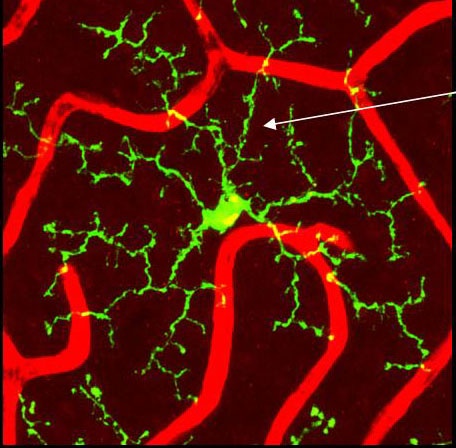
BSc Hons (London,1978); PhD (London, 1982)
Senior Lecturer
- About
-
- Email Address
- i.j.crane@abdn.ac.uk
- Telephone Number
- +44 (0)1224 437529
- Office Address
IMS Building, Room 5.19 (Lab 4.51)
Institute of Medical Sciences
Foresterhill Health Campus
Aberdeen, AB25 2ZD
- School/Department
- School of Medicine, Medical Sciences and Nutrition
Biography
Isabel Crane graduated from the University of London with a first class honours degree in Genetics and Microbiology in 1978 and with a PhD in Genetics in 1982. Her interest in Immunology also began in 1982 with a postdoctoral research appointment at the National Institute for Biological Standards and Control, London, working on Interferon gamma. In 1984 she moved to a research post at the University of Bristol, becoming Wellcome Trust Lecturer in Immunology from 1986 to 1990. She joined the Department of Ophthalmology at Aberdeen University in 1995 where she began a research programme to investigate the role of chemokines in the passage of inflammatory cells across the blood-retina barrier. She was appointed Saving Sight in Grampian Lecturer in Immunology in 2003 and Senior Lecturer in 2007.
Internal Memberships
Lead Radiation Protection Supervisor for Institute of Medical Sciences.
Acting Senior Personal Tutor for School of Medicine and Dentistry
- Research
-
Research Overview
Research interests centre around the role of chemokines and their receptors, and adhesion molecules, in leukocyte trafficking with particular focus on recruitment to the inflamed retina. These studies use
experimental autoimmune uveitis as a model system for the human condition Endogeneous Posterior Uveitis (Posterior Intraocular Inflammation).
Chemokines and their receptors, and adhesion molecules, are investigated at the blood-retina barrier using a combination of in vitro, in vivo and ex vivo methods. These include the tracking of labelled leukocytes by scanning laser ophthalmoscopy and subsequent confocal microscopy. An example of this use of scanning laser ophthalmoscopy can be seen in a British Journal of Ophthalmology video report, July 2001, Xu et al. This non-invasive method enables the real-time tracking of leukocytes in vivo under true physiological conditions in the retinal circulation.
Using this method, we can show that leukocyte rolling, adherence and extravasation takes place in veins and post-capillary venules in experimental autoimmune uveitis. We have demonstrated the importance of PSGL-1 in the preferential recruitment of Th1 cells to the inflamed retina and that CCR5 and MIP-1a (CCL3) are also involved. See publications.More recently we have focused on the trafficking of monocytes to the inflamed retina and in particular the roles of CX3CR1 and CCR2. Image below shows CX3CR1 positive microglial cell (green) in the retina with extended dendrites as indicated by arrow.

A second research strand currently focuses on the role of retinal pigment epithelial cells (RPE) in Age-related macular degeneration (AMD). AMD is the leading cause of blindness in the industrialised world.
AMD is characterised by an early and progressive degeneration of the RPE in the macula. RPE are important for support of underlying photoreceptor cells, including phagocytosis of membranes shed by the photoreceptors, and their degeneration leads to destruction of the photoreceptors. Our research investigates the factors involved in RPE degeneration.
- Teaching
-
Teaching Responsibilities
Co-ordinator for Immunology, and Immunology and Pharmacology Degree Programmes. Course co-ordinator for Advanced Immunology, Current Research in Immunology, Fundamentals of Immunology, and Applied Immunology - Human Health. Teaching also on MSc Immunology courses.
- Publications
-
Page 1 of 4 Results 1 to 10 of 38
Differential expression of CCR2 and CX3CR1 on CD16+ monocyte subsets is associated with asthma severity
Allergy, Asthma, and Clinical Immunology, vol. 15, 64Contributions to Journals: ArticlesGene expression data analysis identifies multiple deregulated pathways in patients with asthma
Bioscience Reports, vol. 38, no. 6, BSR20180548Contributions to Journals: ArticlesRetinal Pigment Epithelial Cell Apoptosis is Influenced by a Combination of Macrophages and Soluble Mediators Present in Age-Related Macular Degeneration
Current Eye Research, vol. 41, no. 9, pp. 1235-1244Contributions to Journals: Articles- [ONLINE] DOI: https://doi.org/10.3109/02713683.2015.1109129
S100B up-regulates macrophage production of IL1β and CCL22 and influences severity of retinal inflammation
PloS ONE, vol. 10, no. 7, e0132688Contributions to Journals: Articles- [ONLINE] DOI: https://doi.org/10.1371/journal.pone.0132688
- [OPEN ACCESS] http://aura.abdn.ac.uk/bitstream/2164/6228/1/journal.pone.0132688.PDF
- [ONLINE] View publication in Scopus
Regulation of T-lymphocyte CCL3 and CCL4 production by retinal pigment epithelial cells
Investigative Ophthalmology & Visual Science, vol. 54, no. 1, pp. 722-730Contributions to Journals: Articles- [ONLINE] DOI: https://doi.org/10.1167/iovs.12-10602
S100B in the ocular inflammatory response; cytokine and chemokine modulation
Immunology, vol. 137, no. S1, pp. 494Contributions to Journals: Abstracts- [ONLINE] DOI: https://doi.org/10.1111/imm.12002
Analysis of RAGE and S100B mRNA expression in retinal pigment epithelial cells in response to cytokine stimulation
Immunology, vol. 131, no. S1, pp. 97-98Contributions to Journals: Abstracts- [ONLINE] DOI: https://doi.org/10.1111/j.1365-2567.2010.03390.x
CX3CR1-deficiency is associated with increased severity of disease in experimental autoimmune uveitis
Immunology, vol. 128, no. 1, pp. 25-33Contributions to Journals: Articles- [ONLINE] DOI: https://doi.org/10.1111/j.1365-2567.2009.03046.x
Development of experimental autoimmune uveitis: efficient recruitment of monocytes is independent of CCR2
Investigative Ophthalmology & Visual Science, vol. 50, no. 9, pp. 4288-4294Contributions to Journals: Articles- [ONLINE] DOI: https://doi.org/10.1167/iovs.09-3434
Critical but divergent roles for CD62L and CD44 in directing blood monocyte trafficking in vivo during inflammation
Blood, vol. 112, no. 4, pp. 1166-1174Contributions to Journals: Articles- [ONLINE] DOI: https://doi.org/10.1182/blood-2007-06-098327
